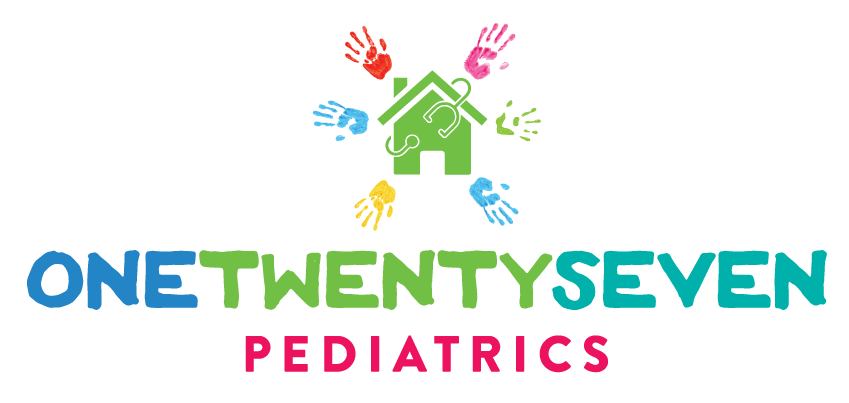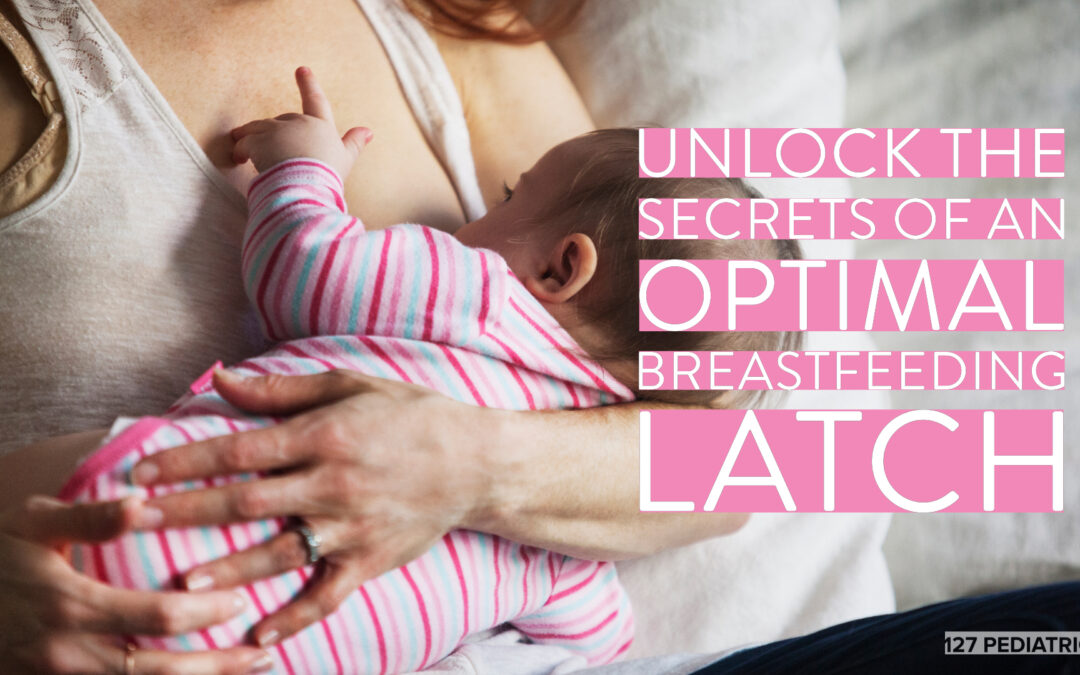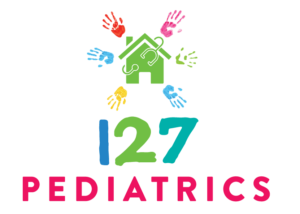Breastfeeding is similar to riding a bike. When you first start out, you are really terrible at it and as a result you are often pretty sore. As an avid Peloton rider, I can tell you that those early days of soreness made me want to quit and pick a new form of exercise. However, as my determination took over, I overcame this obstacle and have been riding the bike regularly for the last five years. Now, I can hop on the bike for a quick workout whenever I want and know what to expect.
Successful breastfeeding starts out the same way as learning to ride a bike. At first, you will find it difficult to latch your baby to the breast for a breastfeeding session. However, with time and practice, you will master the skills needed in order to progress in your breastfeeding journey. Where the analogy breaks down is that it takes two people working together to accomplish breastfeeding success, while bike riding just takes one person. Don’t forget that the baby needs to learn this new skill as well.
While an optimal breastfeeding latch may seem like a far off dream in the early days postpartum, you and your baby will eventually get the hang of it. A positive breastfeeding experience hinges on your ability to latch your baby correctly. Not only does a good latch help you to have a good milk supply, but it also prevents you from having sore breasts or sore nipples.
In this article, we will look at the steps to a deep latch, the importance of the letdown response, how to know if your baby is transferring milk, signs that they are done eating as well as signs of a bad latch.
Mom’s Role in Achieving an Optimal Breastfeeding Latch
Latching is a process that varies depending on individual preferences, but there are essential steps to follow regardless of your style. As you and your baby become more skilled at these steps, you won’t have to follow them exactly every time. In my expert opinion as a board-certified pediatrician & breastfeeding medicine physician, this is the way that I have taught many women how to achieve an optimal breastfeeding latch.
Select a calm location: Whether it be your infant’s nursery or a preferred seat in the living room, establish a designated area for nursing sessions at an early stage. Opt for a tranquil setting where you can feel at ease and relaxed.
Stack Pillows in your lap. Pillows provide comfort and support during breastfeeding. Whether you use a specific nursing pillow or just pillows from your bed, this step is important for early success. It will help you to avoid bringing your body to the baby. Repeatedly bending over your baby to feed will cause discomfort in your back and shoulders. In addition, you will likely have neck pain if you are continually bringing your body to the baby instead of the other way around.
Find a comfortable spot. Use pillows to support your back, arms, and your baby’s body. To achieve a good latch on position, align your baby’s nose with your nipple.
Sandwich your breast tissue. To make a “nipple sandwich,” compress your breast gently by grasping behind the areola with your thumb and fingers. Your hand should form a “c” shape around your breast tissue. Additionally, make sure your “sandwich” is aligned in the direction of your baby’s open mouth.
Encourage your baby to open his mouth. To encourage your baby to open their mouth wide, gently stroke the corner of their mouth with your nipple or finger. This wide gape will ensure that the baby gets a mouthful of breast tissue.
Quickly bring the baby to the breast. When your baby opens his mouth widely, quickly bring the baby towards the breast to latch on. Your nipple should be aimed towards the roof of the baby’s mouth for an asymmetrical latch. Both their top and bottom lips should be flared outwards and their chin should be flat. In addition, you should not feel any nipple discomfort.
Exclusive breastfeeding begins with an optimal breastfeeding latch. By following these steps and practicing them over and over, you will be able to latch your baby easily in the early weeks of breastfeeding. As your baby grows, you will not need to follow these steps exactly.
Let-down Reflex
The let-down reflex or milk ejection reflex happens during the early phase of each breastfeeding session. When the baby nurses, a signal is sent from the breast to the brain. The brain then releases a hormone that acts on the milk ducts in the breast. The alveoli (milk making) cells in the breast release milk into the milk ducts. Subsequently, the milk travels down the ducts, and the baby can then remove the milk by latching to the breast.
Oxytocin is a hormone and the main player in this process. It causes muscle contractions around the alveoli which leads to the release of milk into the milk ducts. You may feel a tingling sensation in your breast during a let down response, especially in the early weeks of breastfeeding. Sometimes this sensation will subside as time goes on. However, some women may have a paradoxical reflex during letdown. This is a rare response to the letdown, but some women can feel bad feelings or have a sense of impending doom. It is called D-MER or dysmorphic milk ejection reflex.
Furthermore, many nursing mothers do not experience any particular sensation when their milk lets down. This should not cause you to be concerned about your milk supply. The main drivers of milk production after the first couple of weeks postpartum is supply and demand. The production of breast milk is dependent on how effectively and frequently you empty your breasts. Whether or not you feel a letdown sensation is not significant.
Nutritive vs Non-Nutritive Sucking: What’s the difference?
Infants engage in suckling as a means of seeking comfort and receiving nourishment. While it may not be possible for parents or caregivers determine the exact amount of nutrition a baby receives from breastfeeding, they can often distinguish between nutritive sucking (taking in food) and non-nutritive sucking (seeking comfort) by observing specific indicators.
Visual cues are important for distinguishing between actual eating and sucking for comfort. Watch your baby’s lower jaw for rhythmic movement while extracting milk. Look for muscle movements in the ear and temple area, indicating active sucking and swallowing. You may also notice their throat bulging out if they are taking in and swallowing milk.
Additionally, you can determine if your baby is actively eating by listening for auditory cues. At the beginning of a feed, you will hear quick and shallow sucking sounds. This is what I refer to as “flutter sucking.” This rapid sucking helps initiate the let-down response in your breast. Once your milk lets down, you should hear more of a gulping or swallowing sound. Your baby’s sucking pattern will change from quick non-nutritive sucking pattern, into a slow suck-suck-suck-swallow pattern. Towards the end of the feeding, your baby’s sucking pattern will slow down and you will hear fewer swallows.
On the other hand, non-nutritive sucking is a series of rapid sucks that don’t move much milk out of the breast. You may hear a swallow every once in a while as the baby is passively allowing milk to drip into their mouth. Often, you have to be paying close attention to know the difference in sucking patterns when you are first learning how to breastfeed.

How Do I Know if My Baby is Done Eating?
When it comes to breastfeeding, each baby has their own unique preferences. Some babies naturally release the breast when they are finished feeding, while others may require assistance. Various factors contribute to whether a baby will independently release the breast.
The age and developmental stage of the baby is a significant factor in their ability to suck and release the breast. Newborns generally have a weaker suck and lack the coordination to release the breast independently. As babies grow and develop motor skills, they can release the breast more easily.
Another factor to consider is the level of hunger in the baby. If the baby is very hungry, they may latch on strongly and may not want to release the breast until they are satisfied. Conversely, if the baby is full or uninterested in feeding, they may release the breast sooner.
If your baby starts a non-nutritive sucking pattern, gently break the suction by putting your finger in the corner of their mouth. Then, you can move your baby to the other breast and start the latch on process again. Some mothers choose to “burp” their baby between breasts, but it’s usually not necessary. Breastfeeding has the benefit of a baby sealing well around the breast and not swallowing a lot of air like a bottle feeding baby.
Additionally, you can tell if a baby is satisfied with the feeding if they unlatch and fall asleep. This “milk drunk” face is something that you will forever remember when you see it. On the other hand, if your baby comes off the breast and falls asleep, but quickly starts crying or rooting again, likely that baby did not get a full feeding.
What Happens After a Bad Latch?
There are numerous benefits to a good latch, including the avoidance of pain. In addition, a proper latch allows for efficient milk transfer from the breast and hence a good milk supply for the duration of your breastfeeding journey. If your breastfeeding goals include exclusive breastfeeding, mastering the latch is the best first step.
Signs of a bad latch:
- Painful breasts or painful nipples
- Bruising, bleeding or scabbing of your nipples
- Hungry and unsatisfied baby
- Fussiness at the breast
Often, when a baby is latched incorrectly, they are latched directly to the nipple instead of both the nipple and the areola. This will cause the newborn child to suck directly on a sensitive area of your body leading to all sorts of pain and problems. With a correct latch, your nipple is protected from the baby’s sucking action by being compressed against their hard palate. Your quality of life as a breastfeeding mother will improve if you can achieve a proper latch. If you can’t achieve a good latch on your own, reach out to a lactation consultant who can help you to have a positive breastfeeding experience.
How Can 127 Pediatrics Help You in Your Breastfeeding Journey?
As a pediatrician and breastfeeding medicine expert, Dr. Wadley is passionate about helping mothers to succeed with breastfeeding. From one on one consults to online breastfeeding education, she wants to see all women succeed in their breastfeeding journey.
At 127 Pediatrics, we provide both pediatric and breastfeeding medicine care through a direct primary care model. We also offer lactation and breastfeeding medicine consults outside of our membership model to mothers in our community. In addition, we are developing some online breastfeeding education opportunities in the coming months. In order to stay up to date on our latest offerings, be sure to sign up for our newsletter by clicking the link below.

© 127 Pediatrics, April 2024
This article is for information purposes only. Please consult your personal physician for medical advice.

Dr. Andrea Wadley is a pediatrician and lactation consultant. She is board certified in both pediatrics and breastfeeding medicine. In 2018, she opened 127 Pediatrics as a way to provide a different option for pediatric and lactation care in her community.


